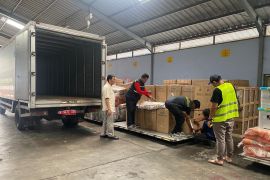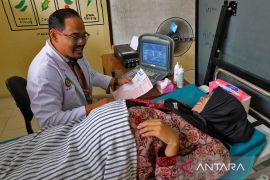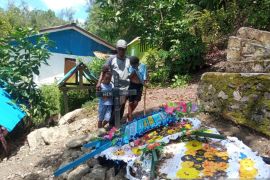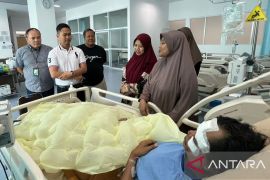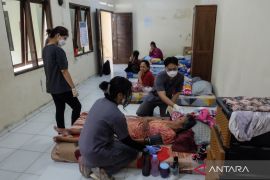It aims to detect more cases as part of efforts to end the HIV epidemic.
During an online media briefing, the ministry’s director for communicable diseases, Ina Agustina Isturini, said that of the 356 thousand patients identified so far, 239 thousand or 67 percent are taking medication.
Meanwhile, at least 132 thousand, or 55 percent, patients have achieved virus suppression.
Isturini said that finding the remaining patients will be challenging, since, oftentimes, some patients disappear during the process of surveillance. This makes the 95-95-95 target for ending the HIV/AIDS epidemic more difficult to meet.
The target seeks to ensure 95 percent of patients know about their HIV status, 95 percent of them take medication or treatment, and 95 percent of those taking medication achieve virus suppression, she expounded.
“Being suppressed means the person’s virus is no longer transmitted, despite existing (in the body),” she said.
Moreover, there is the 3-zeroes target—zero new infections, zero AIDS deaths, and zero stigma and discrimination—that also needs to be met.
Of the 356 thousand people known to have HIV, around 37 percent are from key populations, such as gay or bisexual men, sex workers, and transgender people. Meanwhile, 36.7 percent belong to the general populace and include immunocompromised people, such as TBC patients.
At least 15.3 percent of the patients are from vulnerable groups, such as customers of sex workers, the partners of people from the key population, and babies whose mothers have HIV.
To identify more patients living with HIV, the government has launched efforts such as prevention, surveillance, treatment, and health promotion, Isturini said.
She urged the public to implement the ABCDE formula to prevent the spread of HIV/AIDS. ‘A’ refers to abstinence, ‘B’ being faithful to partners, and ‘C’ use of condoms for protection.
“And then no drugs. (Drugs) are one of the gateways to transmission, through needles. E, for education," she added.
She also urged people to overcome their fear and go for a medical check-up. To reduce stigma and discrimination, the ministry has trained health personnel and educated the public on how to treat HIV and sexually transmitted disease (STD) patients, such as respecting the patients’ privacy.
Isturini stressed that contracting HIV and STDs (sexually transmitted diseases) is not a moral issue, but a health issue. Anyone, from babies to the elderly, any kind of demographic, can contract it.
“So, we should not judge, whoever might get it,” she said.
Related news: A tale of communities in Jayapura that unite against HIV/AIDS
Related news: Get free health check to enable early disease handling: govt
Translator: Mecca Yumna Ning Prisie
Editor: Aditya Eko Sigit Wicaksono
Copyright © ANTARA 2025

